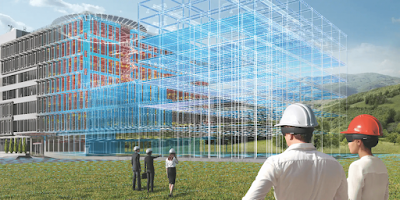
BIM (Building Information Modeling) 3D modeling is a process that involves creating digital representations of buildings or infrastructure projects using specialized software. It goes beyond traditional 2D drawings by incorporating three-dimensional geometry and data, allowing for enhanced collaboration, analysis, and communication throughout the entire lifecycle of a construction project.
Here are some key aspects of BIM 3D modeling and why it is important:
1. Comprehensive Project Visualization: BIM 3D modeling provides a realistic and detailed visualization of the entire project, enabling stakeholders to better understand the design intent, spatial relationships, and aesthetics. This visualization helps in making informed decisions during the design and planning stages.
2. Improved Collaboration and Coordination: BIM allows multiple project participants, such as architects, engineers, contractors, and facility managers, to work together in a shared digital environment. This collaboration promotes better coordination, reduces conflicts, and enhances communication among the team members, leading to improved project outcomes.
3. Clash Detection and Risk Mitigation: BIM software can identify and highlight clashes or conflicts between various building elements (e.g., structural elements interfering with mechanical systems). Detecting these clashes early in the design phase helps to mitigate risks, avoid rework, and minimize costly changes during construction.
4. Accurate Quantity Takeoffs and Cost Estimation: BIM 3D models contain intelligent object properties and data, such as material quantities, dimensions, and costs. This data can be extracted and used for accurate quantity takeoffs and cost estimation, aiding in project budgeting, procurement, and resource planning.
5. Performance Analysis and Simulation: BIM software allows for simulations and analysis of various building performance aspects, such as energy efficiency, lighting, acoustics, and structural integrity. This analysis helps optimize design choices, identify potential issues, and achieve sustainability goals.
6. Enhanced Facilities Management: BIM models can be handed over to facility managers after construction, serving as a valuable resource for facility maintenance, operations, and renovations. The model contains information about building systems, equipment, and maintenance schedules, facilitating efficient facility management throughout its lifecycle.
Overall, BIM 3D modeling streamlines the design, construction, and operation of buildings or infrastructure projects by facilitating collaboration, improving communication, reducing errors, and increasing efficiency. It enables a holistic approach to project management and has become increasingly important in the architecture, engineering, and construction industry.
No comments:
Post a Comment